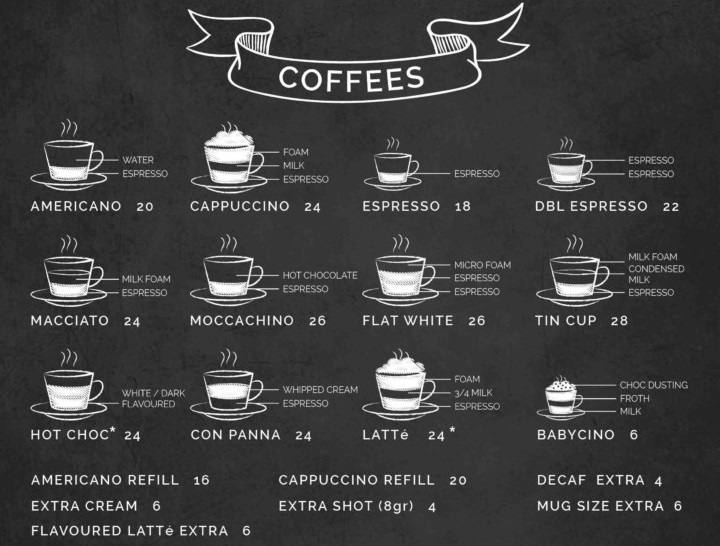How To
Starting a Coffee Shop – Costs & Considerations
 The average American spends $3 a day on their morning cup o’ joe. That comes to a whopping $1,110 a year on coffee! So it’s no wonder why coffee shops are such a booming business. However, starting a coffee shop takes a lot more than some bags of coffee beans and a few machines. This article will cover some of the basic costs and considerations you will need to take into account before beginning your coffee business.
The average American spends $3 a day on their morning cup o’ joe. That comes to a whopping $1,110 a year on coffee! So it’s no wonder why coffee shops are such a booming business. However, starting a coffee shop takes a lot more than some bags of coffee beans and a few machines. This article will cover some of the basic costs and considerations you will need to take into account before beginning your coffee business.
Coffee Equipment
Starting with the basics, you obviously can’t have a coffee shop without an espresso machine and a couple of grinders. But with so many different machines on the market, it can be overwhelming for a new coffee shop owner. So there are two very important rules to consider here:
1. Don’t cut corners
You are going to need commercial quality coffee equipment. Period. This is not the area of your business where you’d want to take financial shortcuts. The equipment at your coffee bar will serve as the cornerstone of your business. Additionally, commercial equipment will help you effectively scale your business in a practical and efficient manner.
2. More expensive does not always mean ‘better’
While it is true that this equipment will be among highest expenses you will incur, you can still find some of the best commercial espresso machines at a relatively low cost.
While it might be tempting to get that trendy $15,000 machine, if you are on a budget, invest in a low-cost unit first. You can still find excellent pre-owned espresso machines and grinders. Once business begins to boom, then you you can begin to think about treating yourself to a newfangled brewing machine.
It’s difficult to give an exact price for these machines, because the features that are included with a commercial unit will influence the overall cost. A proper commercial espresso machine will usually run you between $3,000 to $7,500 A great grinder will be in the range of $1,000 to $2,200, but keep in mind that you’ll want to have multiple grinders on hand.
Coffee Blends
 One of my favorite parts of opening a coffee shop is selecting the beans, blends, and roasts that your customers will soon enjoy. To get started, you’ll want to connect with a number of coffee roasters — either locally or nationally — to get a wide range of product to sample.
One of my favorite parts of opening a coffee shop is selecting the beans, blends, and roasts that your customers will soon enjoy. To get started, you’ll want to connect with a number of coffee roasters — either locally or nationally — to get a wide range of product to sample.
Take advantage of the samples that roasters give out, and ask a group of friends and acquaintances with diverse paletes to try them out. I say “diverse paletes” because you’ll want a focus group that is reflective of the general public, not reflective of coffee aficionados.
For example, my mother can’t drink what I consider to be ‘good coffee.’ She thinks it’s far too strong, and she enjoys coffee that I consider far too flat. Try to find a happy medium.
In terms of costs, you need to get used to buying in bulk. Buying coffee in bulk will obviously help lower your total costs, but you need to make sure that your customers are going to enjoy the product you select. I’ve come across far too many coffee shop owners who end up throwing up several hundred dollars worth of coffee beans because their customers didn’t like it.
As a coffee shop owner, don’t be afraid to negotiate with a roaster. A general rule is the more coffee you purchase in one order, the lower the cost will be. If you buy five ten-pound bags of coffee per month, you’ll get a different price than if you order 20 ten-pound bags.
The National Coffee Association has a great B2B Directory that can help you find some reputable roasters.
- Pro tip: Once you select a roaster to work with, ask them if you can purchase your coffee equipment through them. They can often get you great deals of machines and grinders at or near wholesale price.
Location
Like any other restaurant, cafe, or bar; what really sets a business a part from the rest of the pack are two things: its location and its menu.
Finding a great location will make or break the success of your shop. If it’s too far off the beaten path or away from foot traffic, gaining a loyal following will be extremely difficult. However, if you set up shop near a town square, city center, or a hip downtown location; attracting a following becomes much easier.
If you’re concerned that rent costs in an area with high foot traffic will be too expensive, you could consider a coffee truck or coffee cart business. A brick and mortar coffee shop has a lot in common with a more ‘mobile‘ coffee business, but some of the biggest differences include startup costs and maintenance costs. Make sure you’re choosing a business model that aligns with your goals and financial situation.
While taking that into account, achieving long-term success is extremely dependent on developing a kick-ass menu.
Menu
Do you plan on serving up classic coffee drinks and maybe a few baked goods, or do you want a larger menu? Curating a great menu with a mix of hot, cold, and trendy new drinks will not only attract new customers, but will help you maintain a loyal client base. But keep in mind, while having a larger menu may set you apart from other coffee shops, it will also increase your equipment costs.
 Curating the perfect menu will take a little bit of work, but by browsing the internet and social media for some of the hottest trends, it’ll be a breeze.
Curating the perfect menu will take a little bit of work, but by browsing the internet and social media for some of the hottest trends, it’ll be a breeze.
Look at the tags of other successful local shops, and browse through the comments to get a feel how other local competitors are developing, maintaining, and evolving their own brand.
Also, keep in mind comments and reviews by customers to see what local residents want that your competitor is not delivering.
By integrating the up and coming local trends in coffee making with your own personal vision, your shops menu will be able to develop its own independent brand while still remaining appealing to locals.
Marketing
Even though almost everybody loves a good cup of coffee, it can take some time before your cafe is a local favorite. Don’t be afraid to try traditional and creative ways to promote your business!
Creating a marketing plan for your business doesn’t have to be difficult or expensive.
You can start by finding a designer online and hiring them to create your business’ logo, signs, business cards, cups, and coffee cup sleeves. You can do all of this for $100 to $300 dollars.
After you have a logo, find a website designer online to create a simple site for your business. When you have a presence online, it shows that’s you’re a serious established business and it also makes it easier for customer to find you.
Engage with your consumers through social media channels as well. There are many high-quality video maker and photo editor apps and websites which will help you to create attractive content.
Lastly, connect with your local chamber of commerce or community business association. You’ll meet tons of people who can connect with you local newsletters and other publications that will be happy to interview you or offer you opportunities to do a bit of local advertising.
By using these strategies, you’ll be able to make a huge splash in the community with your shop. Good Luck!









